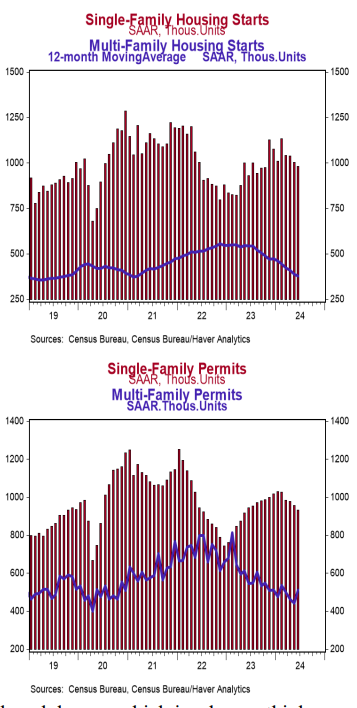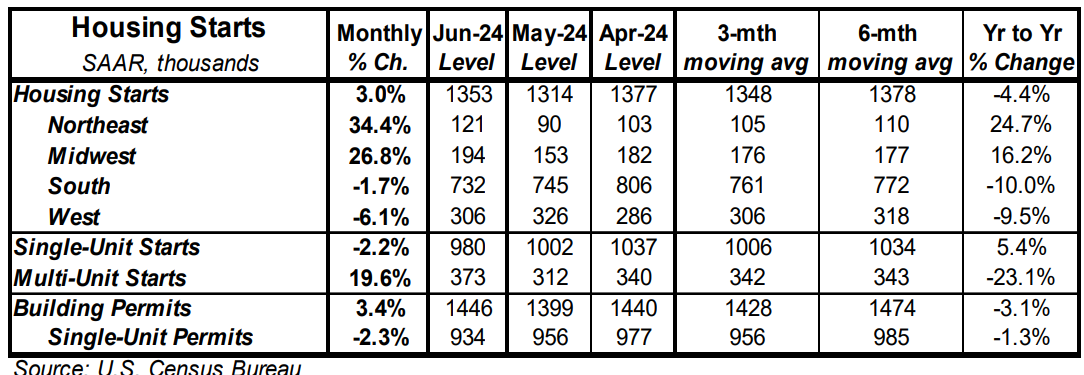- Housing starts rose 3.0% in June to a 1.353 million annual rate, beating the consensus expected 1.305 million. Starts are down 4.4% versus a year ago.
- The rise in June was entirely due to multi-family starts. Single-family starts fell in June. In the past year, single-family starts are up 5.4% while multi-unit starts are down 23.1%.
- Starts in June rose in the Midwest and Northeast, but fell in the West and South.
- New building permits rose 3.4% in June to a 1.446 million annual rate, beating the consensus expected 1.400 million. Compared to a year ago, permits for single-family homes are down 2.3% while permits for multi-unit homes are down 6.4%.
Implications: Don’t get too excited about the jump in housing starts in June. Although they rebounded for the month, they remain below the pace of 2021-2023. Moreover, the monthly rise was entirely due to a 19.6% jump in the volatile multi-family category, while single-family starts dropped to an eight-month low. The good news for future homebuyers is that it looks like builders were focusing their efforts on completing projects in June, as completions surged 10.1% to a 1.710 million annual rate: the fastest pace since January 2007. With strong completion activity and tepid growth in starts, the total number of homes under construction continues to fall, now down 6.9% through the first half of this year. That is usually associated with a housing bust or recession. The lack of construction is why home prices have remained elevated and are rising in most places while rents are still heading up in much of the country: we are building too few homes while lax enforcement of immigration laws mean rapid population growth. We think government rules and regulations are likely the major hurdle for builders in much of the country, but home construction might also be facing headwinds from a low unemployment rate (which makes it hard to find workers) as well as relatively high mortgage rates. Fitting the pattern, the NAHB Housing Index, a measure of homebuilder sentiment, fell to 42 in July from 43 in June. A reading below 50 signals a greater number of builders view conditions as poor versus good. No matter how you slice it, the home building sector seems strangely slow given our population growth and the ongoing need to scrap older homes due to disasters or for knockdowns, which is why we think government rules and regulations are likely a major problem. However, there are some tailwinds for housing, as well. For example, many owners of existing homes are hesitant to list their homes and give up fixed sub-3% mortgage rates, so many prospective buyers will need new builds. In addition, Millennials are now the largest living generation in the US and have begun to enter the housing market in force, which represents a demographic tailwind for activity. Putting it together, we don’t see housing as a major driver of economic growth in the near term, but we’re not expecting a housing bust like the 2000s on the way, either. As the Fed eventually begins to cut rates, mortgage rates should trend lower as well, helping support housing later in 2024.





